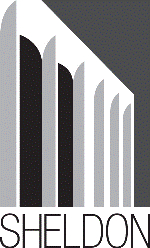Fine and Performing Arts, Hixson-Lied College of

Sheldon Museum of Art: Catalogs and Publications
Date of this Version
1993
Citation
Sheldon Solo, Sheldon Memorial Art Gallery and Sculpture Garden, University of Nebraska- Lincoln. APRIL 27 - JULY 11, 1993
Abstract
Two Guys from Lincoln: Cameron Shaw and Craig Roper offers the work of two contemporary artists who are inheritors of the anti-art tradition that continued in the wake of Duchamp with Warhol's use of popular imagery and, more recently, Koons' controversial kitsch sculpture. Though distinct in their visions of art and the world, Shaw and Roper share more than their home town. As social and aesthetic contemporaries these two artists arrive at conclusions that suggest a generational commonality. Both artists use assemblage to address issues such as the disillusionment of youth, emblems of male dominance, the ambiguity of history, and the death of the American dream. And both artists have developed iconographies that convey multiple meanings about our collective memory. Shaw's highly crafted constructions and his interest in history complement Roper's irreverent objects and his investigations of popular culture. Together they form a compelling commentary on contemporary values.
A combination of found and made elements, Craig Roper's objects are at once casual and confrontational. But their informal appearance belies serious content. Cheap Art, Cheap Bourbon #2 incorporates a photographic diptych representing ajackalope labeled "cheap art" and the image of a framed wildlife painting of a duck inscribed as "cheap bourbon." The two photos are mounted with thumb tacks onto a crude sheet of Styrofoam. Beneath this quirky union is a wooden shelf displaying two corresponding bottles of "Bourbon de Luxe" and a pair of shot glasses.
The mixed metaphors of Cheap Art, Cheap Bourbon make explicit connections between the fantastic deception of the mythical creature, the jackal ope, and the implied manipulation of the art market and the promotion of rote representation in the form of the duck picture as "art." By juxtaposing these two images with the bottles of whiskey, Roper suggests that all these things are aesthetically related, that cheap bourbon and cheap art are equally accessible at the lower echelons of consumerism. This "you get what you pay for" message was delivered with a twist when Roper offered an earlier version of the piece for sale at a price of merely $100. By making the work so readily available, the artist relegated his own work to the level of the kitsch objects he parodies. Also, the raw construction of Cheap Art, Cheap Bourbon challenges the elevated standards of traditional fine art. The viewer concludes that cheap art (a.k.a. bad art) is incestuously related to inferior values, and ultimately contributes to the deterioration of our culture.


Comments
All images are copyright by the original artists. Publication copyright 1993 The Regents of the University of Nebraska